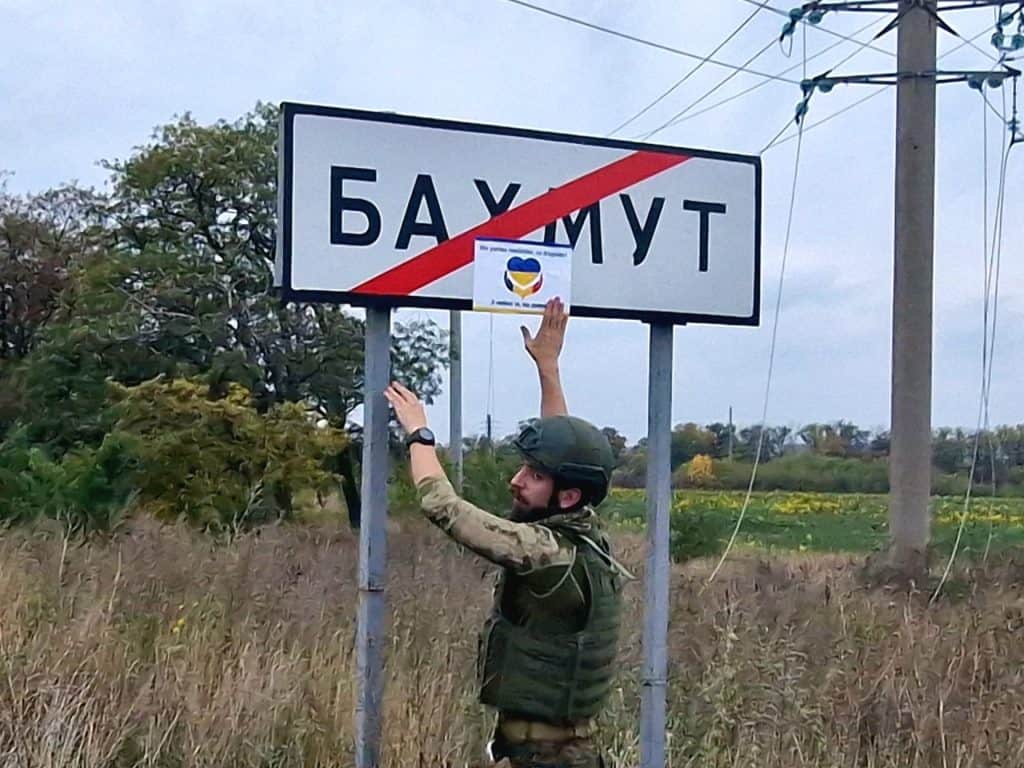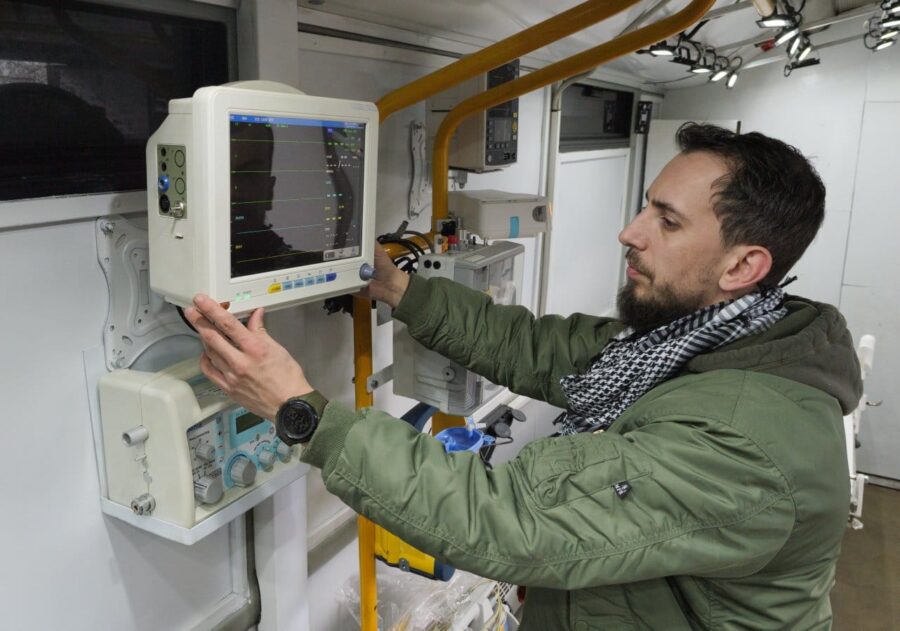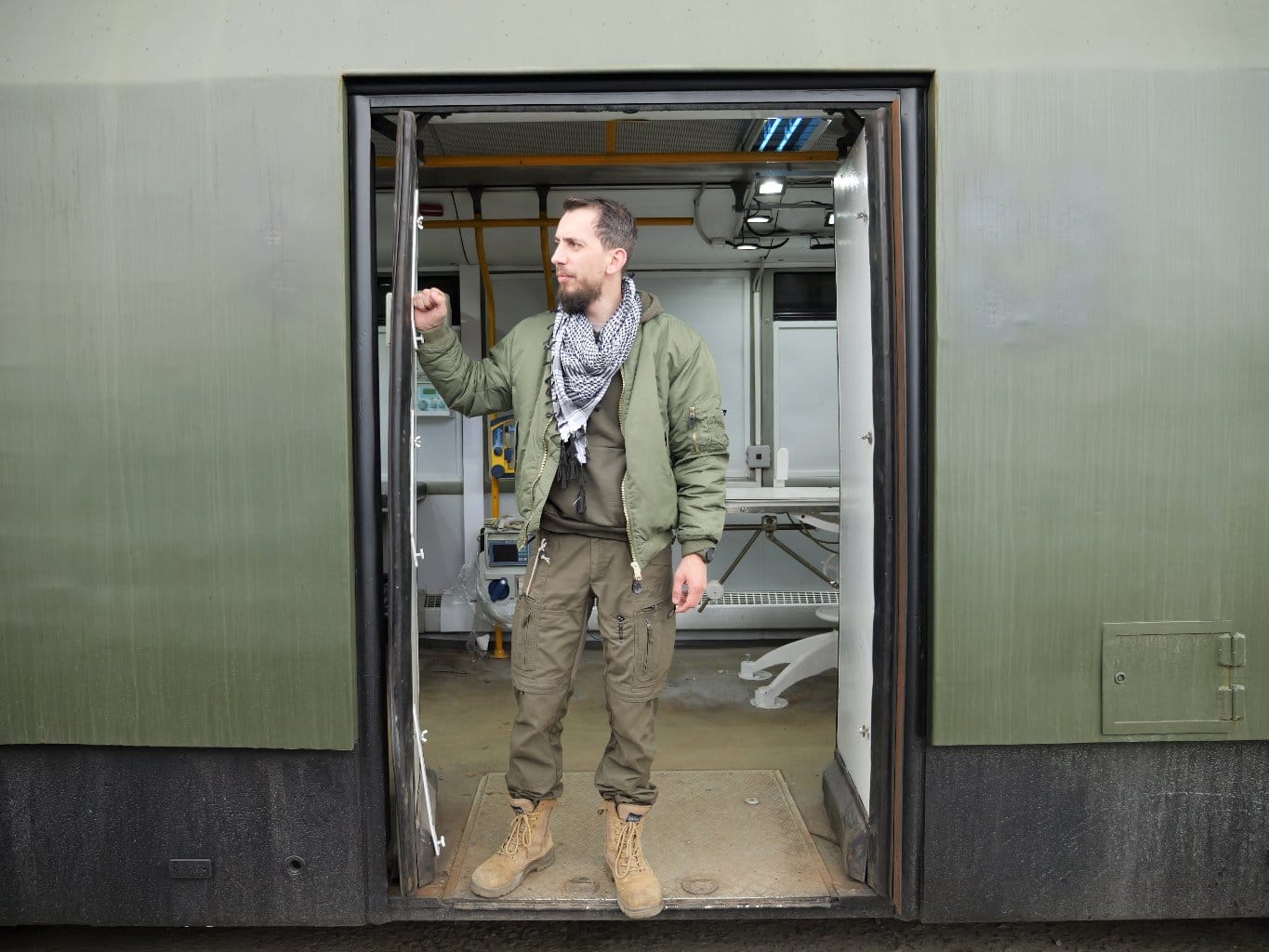In the fall of 2022, when the first frontlines in eastern Ukraine were shifting under the pressure of Russian troops, a Romanian arrived for the first time amid the war—not as a soldier, not as a mercenary, but as a frontline correspondent, military blogger, and volunteer in humanitarian operations.
Radu Hossu, known to the Romanian public for his on-the-ground reports, has spent the past three years delivering dozens of aid transports, vehicles, ambulances, and even a fire truck to the most dangerous points on the front.
„I first reached the front in September 2022, with the first aid purchased using donations from Romanians. The main reason I got involved in the Ukrainian cause is injustice. The injustice suffered by these people, who are our neighbors whether we like it or not, and who have endured extreme hardships,” Radu Hossu, war blogger on the front in Ukraine, told us.
He is the only Romanian civilian decorated by Volodymyr Zelensky, President of Ukraine. He has received three decorations from Ukraine—one from the 101st Brigade, one from the Joint Command Forces, and one from Zelensky himself.
Radu Hossu is also a humanitarian volunteer, accompanying Ukrainian armed forces and supporting them with non-military equipment funded by Romanian donations, as well as a military press correspondent and blogger.
How he arrived in Ukraine
His path was official. “Through my accreditation by the Ukrainian Ministry of Defense. I was an officially accredited war correspondent,” he explains.
He was never a combatant. “I was never part of any combat group; I was only a war correspondent and military volunteer. This means a volunteer who helps the Armed Forces but is not a volunteer soldier, so I am not a combatant.”

Hossu emphasizes the difference: “If I had been a combatant, part of a fighting group, I would have become a legitimate target for the Russians. I went to Ukraine to help civilians and Ukrainian soldiers, not to fight directly against the Russians.”
On Romanian military units
In Romania, the name “Getica” has been heavily used in online propaganda, both positive and negative. This group is composed of soldiers of Romanian origin who reside in Romania.
„I was not part of the Romanian Battlegroup Getica,” Hossu clarifies.
„Getica is only one of the groups within the Ukrainian Armed Forces that was assisted through Romanian donations. Similarly, we helped elite groups like Kraken, Azov, those who fought at Azovstal. I had the honor of meeting some of the heroes who were Russian prisoners after the fall of Mariupol.”

How many Romanians fight in Ukraine
The myth of “Romanian mercenaries” is contradicted by reality. “From what I know, no more than 20–30 Romanians are currently fighting in Ukraine, and in total, throughout the entire war, maybe around 100,” Hossu says. Those who fight are part of the Ukrainian army, not mercenaries paid by private companies.
Hossu firmly rejects the mercenary label: “I don’t know of any Romanian mercenaries in Ukraine. A mercenary is an individual contracted by private companies or who fights for money.”
„Those I know in Ukraine did not go to fight for money. Anyone fighting as a foreigner, once contracted by the Ukrainian Armed Forces, is a Ukrainian soldier, a citizen of another country. The narrative of NATO mercenaries is generated by Russia and is harmful to the truth.”

„There are more, however, from across the Prut River, fighting in different battalions of the International Legion or in brigades that accept foreign fighters.”
There are also other Romanian speakers on the front. “I believe there are other groups of Romanians or Romanian speakers fighting for the Ukrainian cause. I’ve spoken with Romanians who are not part of Getica and have been fighting in Ukraine for a long time,” Hossu says.
Fewer than the Poles
Compared with other countries, Romanians are few. “Romanians are very few compared to Belarusians or Poles. It’s just a handful of people,” he says.
„From what I know, Romanian citizens from Moldova fighting for Ukraine are more numerous than Romanian citizens from Romania. Probably the Moldovans understand better the danger of Ukraine falling.”
How Romanians reach the front
The process is not obscure, explains Hossu: “I have no knowledge of any secretive process. Several people contacted me online, knowing I was going to Ukraine and that I had connections with the Ukrainian administration and Armed Forces. I directed them to public official links, where they can find all necessary information.”
The story of the donations
Beyond reports, Hossu coordinated a massive flow of material support for Ukraine. “The first donation was in 2022, after the United24 project, a project of Zelensky’s administration, was launched. For the Ukrainian cause, between August 1, 2022, and April 2025, over 13,000 Romanians donated more than €900,000 through me.”
„These donations were transformed into dozens of 4×4 vehicles for the Civil Territorial Guards and Armed Forces, military trucks, a hospital built in the name of my friend Oleg Gubal, who we lost on the front.”

The results are tangible. “So far, that hospital has directly saved over 800 lives, and more than 2,000 soldiers have passed through its doors.”
The list is long: “We repaired the water and sewage station in Kherson, delivered generators for the winter, five ambulances—one to the Storojineț Hospital, where there are many Romanian nurses. We delivered a fire truck to Bahmut, even when the city was under tactical encirclement.”
Read also: Soviet-Type Weapons from Romania Are Being Used by Ukraine in the War with Russia




